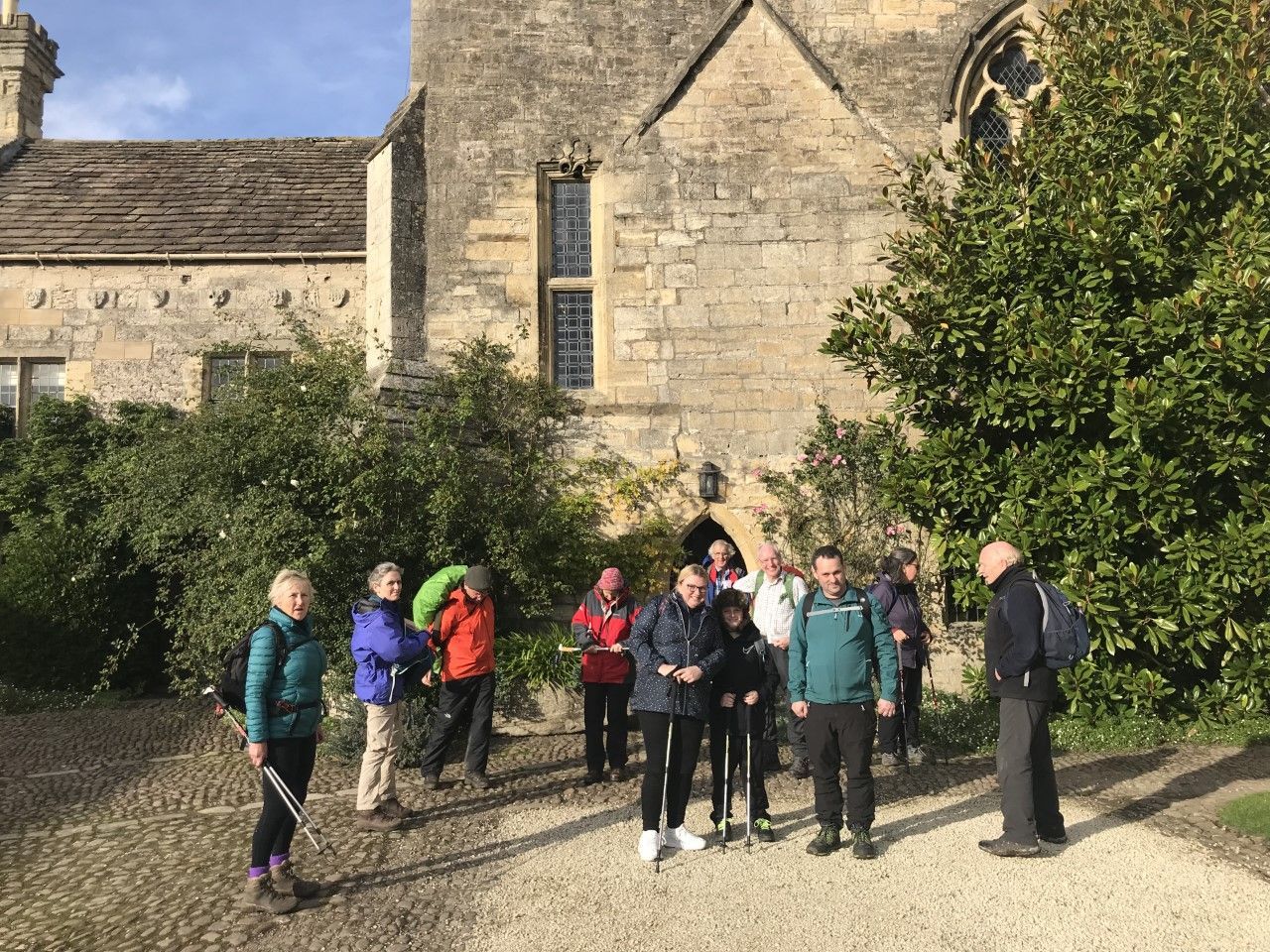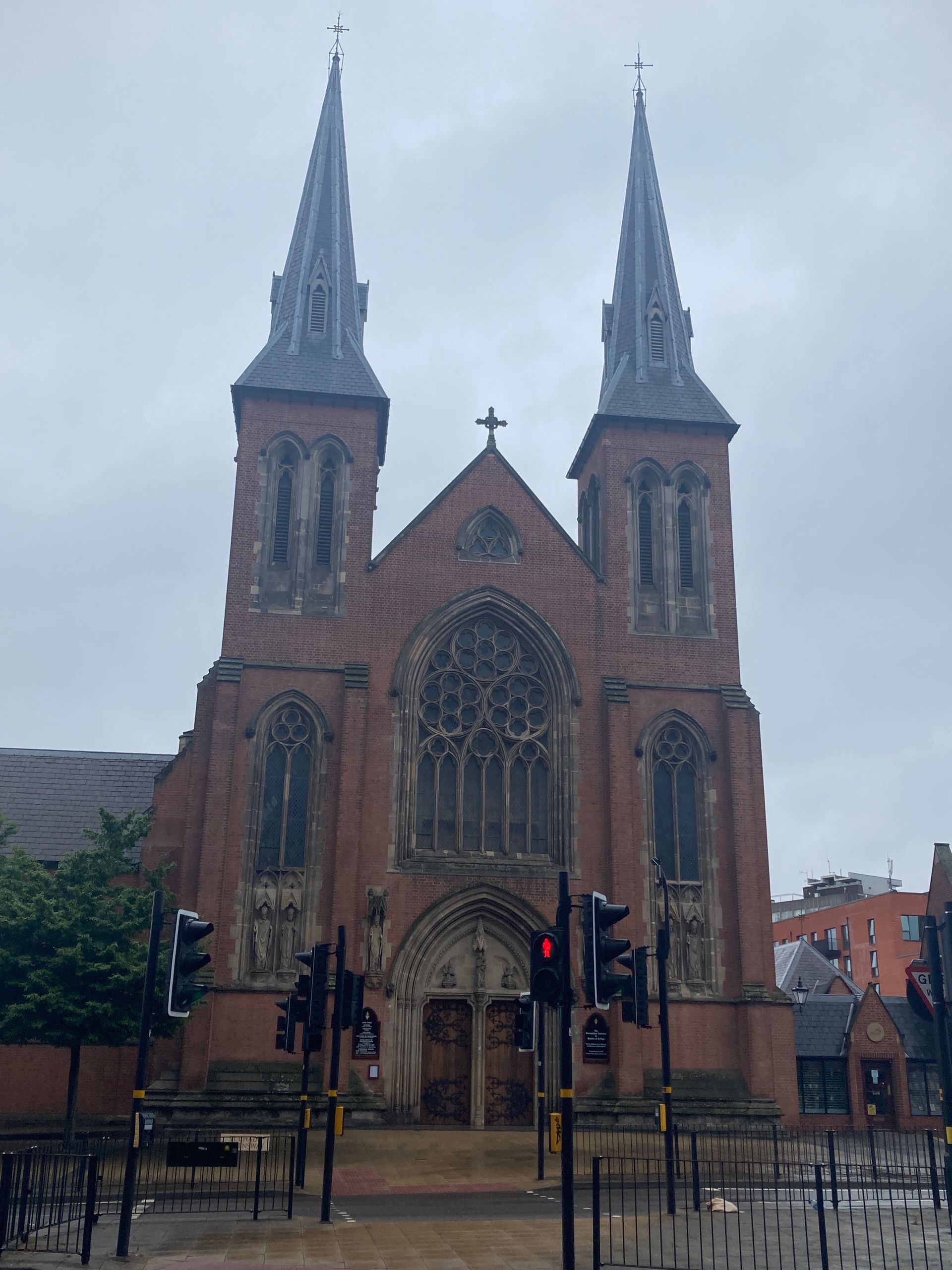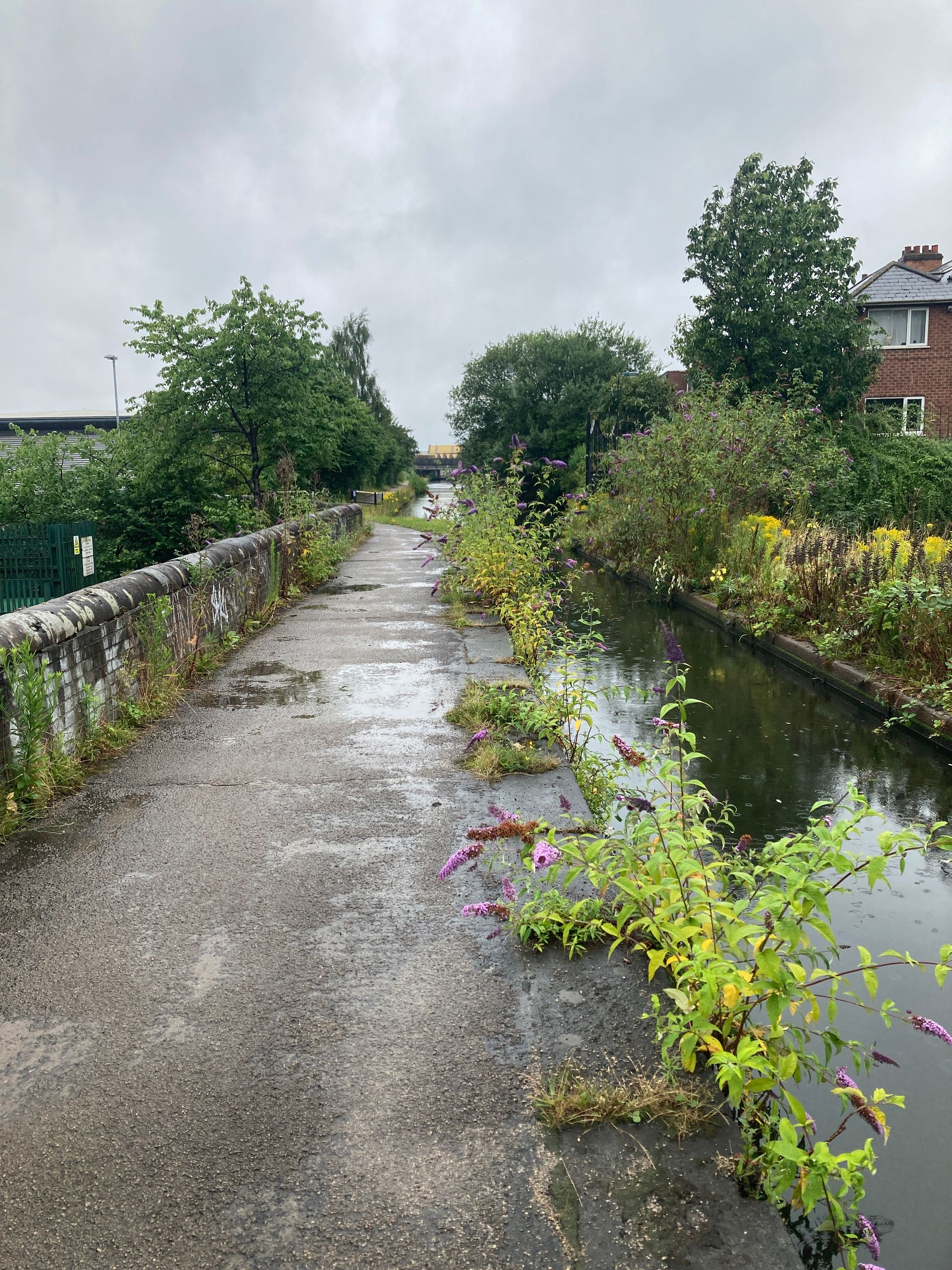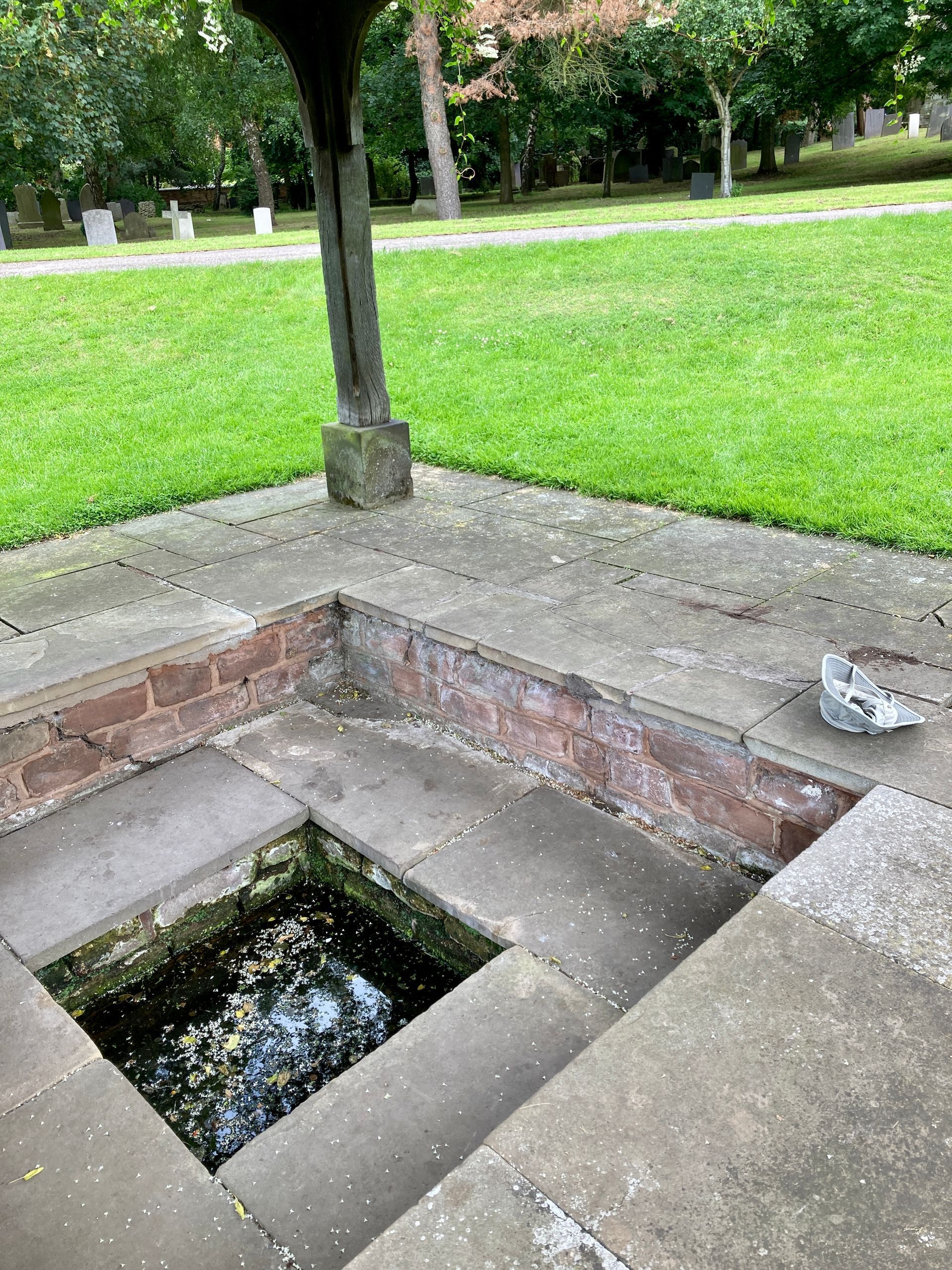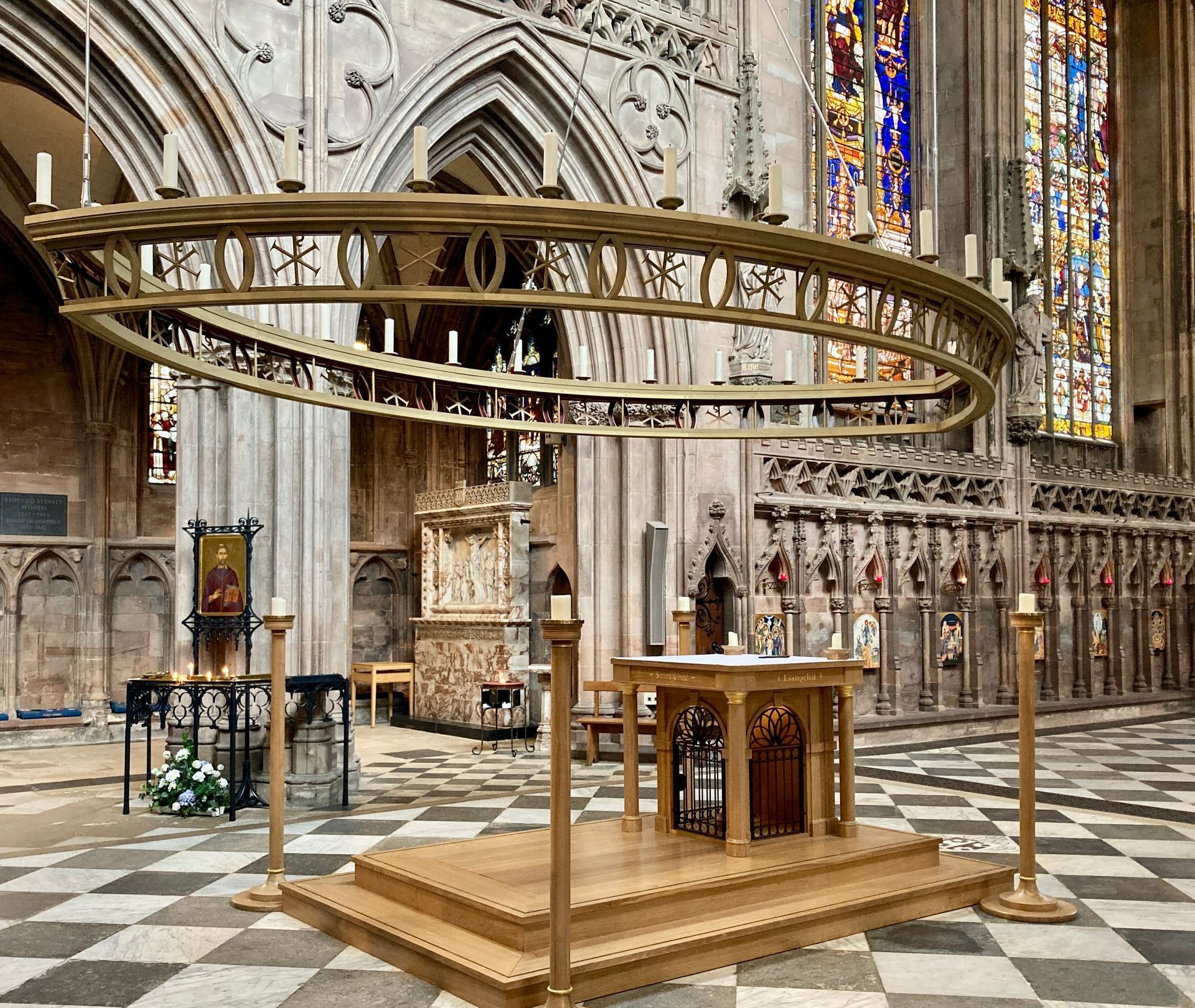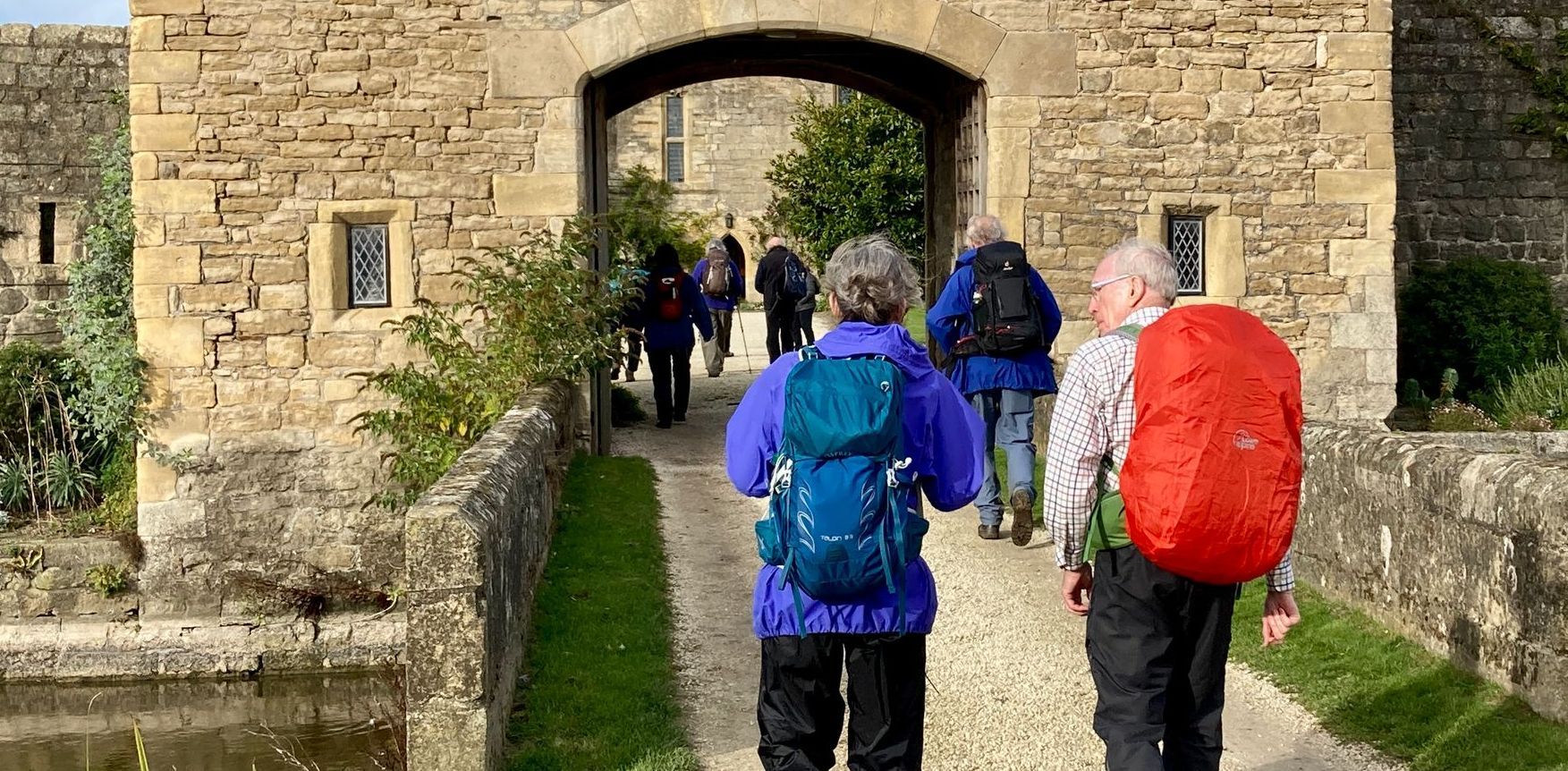The St Chad's Way
A Pilgrim Way for the Archdiocese of Birmingham from the Cathedral of St Chad in Birmingham to St Chad's Well and the Shrine of St Chad in Lichfield Anglican Cathedral
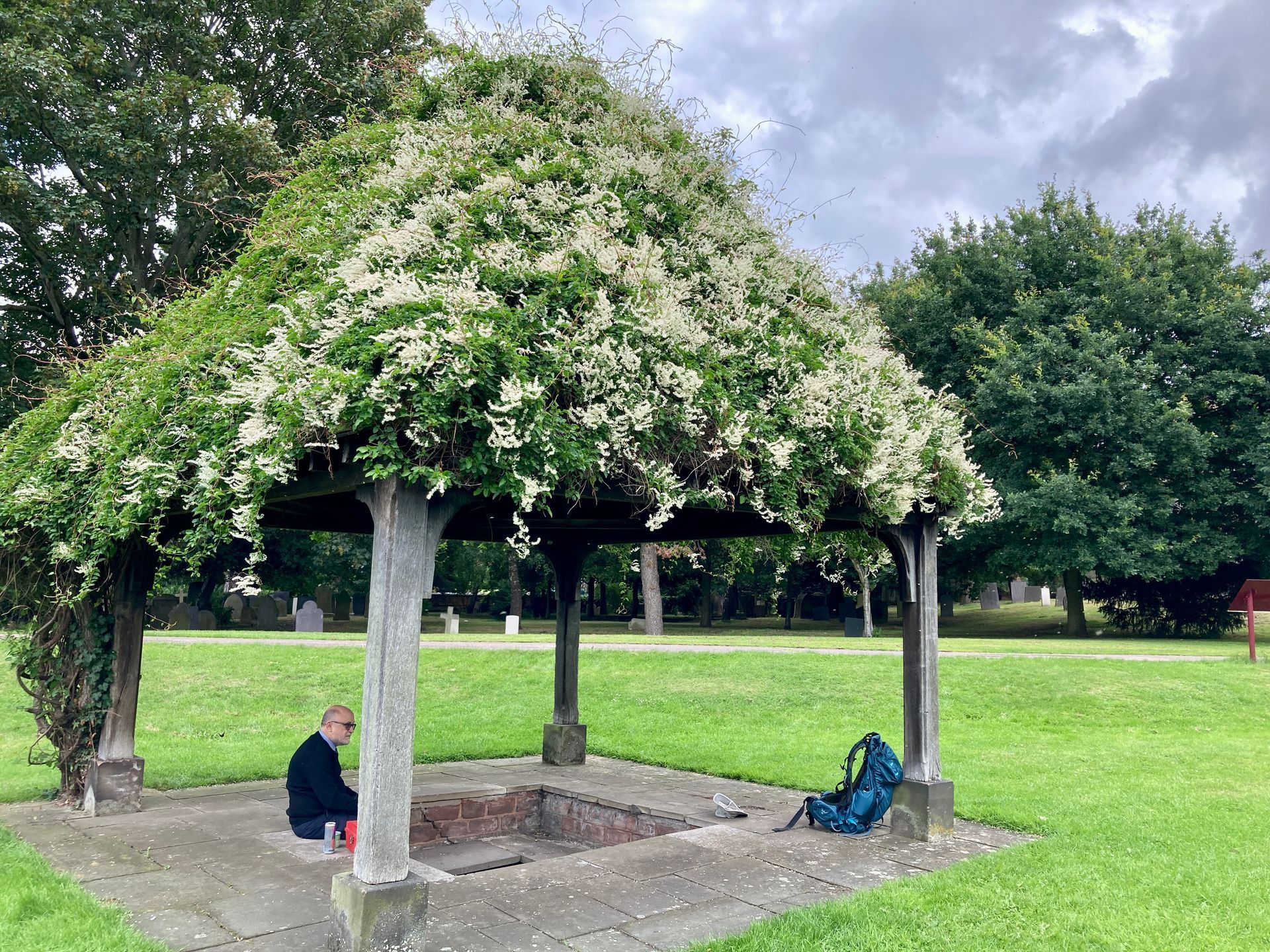
St Chad's Well in Lichfield
About the route
St Chad of Mercia was a C7 Anglo-Saxon monk who became abbot of several monasteries, then Bishop of the Northumbrians and later of the Mercians. His work and life were recorded by the Venerable Bede. He is credited, with his brother St Cedd, with introducing Christianity to the Mercian Kingdom. He died on 2nd March 672, which is his feast day in the Archdiocese of Birmingham. He is also remembered on 26th October with his brother, St Cedd.
The route was proposed by Deacon Owen Gresty. The early section of the Way is along canal towpaths. The Way passes St Mary’s College, Oscott and crosses Sutton Park to reach Sutton Coldfield. The route goes north across quiet countryside to meet the Heart of England Way. The Way ends at the new Shrine of St Chad in Lichfield Cathedral.
At St Chad's Well, shortly before the end of the Way it connects with the 92 mile long Two Saints Way in memory of St Werburgh & St Chad which takes pilgrims on to Chester.
You can find out more about the Way and download the GPX file clicking on the LEARN MORE tab in the
interactive map below
Guidance
You can use the tabs in this section to find the information you need for your pilgrimage.
The Outer Way provides practical advice about the route.
The Inner Way describes the spiritual highlights.
Walking guidance: you can download the inner and outer way notes and the walking directions and maps.
Stages: route, food & drink, accommodation and public transport
1. St Chad’s Cathedral, Birmingham to Boldmere: 7.2 miles
The Way leaves Birmingham down canal towpaths. (NB The towpaths have been well restored but are affected by graffiti and antisocial activities. If you wish to avoid this section, take a bus from near St Chad’s to near Brookvale Park and join the route there (see links below). Alternatively you can concentrate on the marvels of waterways engineering!)
From Brookvale Park the route is through suburbs, using green corridors where possible. You pass the Church of St Margaret Mary at Perry Common and Oscott College and reach the Church of St Nicholas in Boldmere.
There are convenience shops near the route at several points and a pub at Boldmere. You can access the bus network at the northern end of Brookvale Park, Perry Common, Short Heath, Oscott and Boldmere. There is plenty of accommodation in central Birmingham.
2. Boldmere to Sutton Coldfield: 2.1 miles
The Way is north at first to reach the delightful Sutton Park. The Park Visitors’ Centre is close to the route. The Way then reaches Sutton Coldfield and the Catholic Church of the Holy Trinity.
There are shops, pubs, restaurants and B&B accommodation in Sutton Coldfield. There is a railway station and buses to Birmingham.
3. Sutton Coldfield to Canwell: 3.1 miles
The Way passes through suburbs to Little Sutton. It then reaches country lanes before passing under the M6 Toll Rd to reach the Anglican Church of St Mary, St Giles & All Saints at Canwell.
There are food shops, pubs and several bus stops in Little Sutton.
4. Canwell to Lichfield Cathedral: 10 miles
From Canwell Church a delightful lane is followed to join the Heart of England Way on paths and tracks over quiet countryside and through woodland. Finally there is a brief stretch along the disused Lichfield Canal before reaching Lichfield. The Way visits the Catholic Church of the Holy Cross, the Anglican Church of St Chad and St Chad’s Well, the start of the Two Saints Way. Finally Lichfield Cathedral is reached with the new Shrine of St Chad.
There is a pub near where the Way joins the Tamworth Rd, and plentiful shops, pubs and accommodation in Lichfield. There is a railway station and a bus station opposite.
Public transport links
Trains:
https://www.nationalrail.co.uk/
Coaches:
https://www.nationalexpress.com/en
Buses:
https://www.tfwm.org.uk/buses-in-the-west-midlands/
The Inner Way: “Walking is the way of the pilgrim”
“Perhaps St Chad’s own preference for traveling on foot teaches us something else today. Walking is the way of the pilgrim, and it gave St Chad time to consider and to reflect on what he saw as he met people along the way…. Perhaps St Chad recalled St Luke’s account of the road to Emmaus as the risen Jesus walked unrecognised with the two disciples before they saw him in the breaking of bread. Such journeys allow the time for deeper conversations, listening to one another and growing in friendship through accompaniment.”
Archbishop Bernard Longley, speaking at the consecration of the new Shrine of St Chad at Lichfield Cathedral on 8th November 2022.
The Shrine of St Chad in Lichfield Cathedral was a place of pilgrimage and prayer for centuries, but in 1538 the Shrine was destroyed on the orders of Henry VIII. A box of the saint’s bones was saved, and this passed through a series of Catholic owners, ending up in the chapel at Aston Hall, Aston-by-Stone. In 1839 the relics were rediscovered and taken to Oscott. In 1840 Pope Gregory XVI reviewed a report of provenance of the bones, considered that they were authentic relics, and instructed that they should be held in Birmingham Cathedral, then under construction. They were enshrined in a casket above the high altar.
In 1995 the then Archbishop of Birmingham Maurice Couve de Murville asked the University of Oxford Archaeology Unit to examine the bones. The report concluded that one is C8, so cannot have belonged to Chad, but the other 5 are all mid C7. Two of the bones are left femurs, so from two different people, but it is credible that at least 1 and possibly 3 of the bones are those of St Chad.
484 years after the destruction of the original shrine, a new Shrine of St Chad was installed at Lichfield Anglican Cathedral, housing a relic of the saint moved from St Chad's Catholic Cathedral, Birmingham. It was consecrated in an ecumenical service in November 2022.
The Metropolitan Cathedral of St Chad, Birmingham
The Cathedral was a major early work by AWN Pugin and replaced an early C19 church which was inadequate for the growing Catholic population of the city. It consecrated in 1841, elevated to cathedral status in 1850 and became a minor basilica in 1941. It was brick built for economy in a German Gothic style.
A reordering in the 1960s resulted in the loss of Pugin’s rood screen but more recent redecoration has reinstated some of the colour and character of the interior. The Cathedral houses relics of St Chad and on the south side of the nave there is a C19 wooden statue of Chad, holding a model of Lichfield Cathedral.
The Church of St Margaret Mary, Perry Common
The parish was founded in 1926 to serve the new suburb, and the Church and presbytery were built in 1937. The parish school behind the church opened in 1961 and the Church was consecrated in 1966. It is a brick-built Church with an imposing tower and a warm and welcoming interior.
In the late C18 a scheme was developed to educate sons of better off Catholics alongside a seminary at Oscott. The College opened in 1794 at what is now Maryvale Institute. In 1808 the trustees of the College passed control to the Archdiocese of Birmingham and since then it has trained priests for English & Welsh dioceses, religious orders and overseas dioceses. The present buildings date from 1838. The Chapel is a gem, designed by AW Pugin, and where St John Henry Newman preached his account of the ‘Second Spring’ of English Catholicism from penal times to Victorian renaissance. Guided tours are available on specified dates.
The Church of St Nicholas, Boldmere
Land was purchased in 1839 in the then hamlet of Boldmere and a small chapel and two cottages erected in 1840. For the next 30 years the chapel was served by clergy from Oscott College. From 1883 German Benedictines took over, and when they returned to Germany in 1922, Boldmere was established as a separate parish. A temporary church/hall was built in 1929 but the current brick building was completed in 1953 in a simplified Romanesque style. A school was built in 1968 and a presbytery in 1970.
The Church of the Holy Trinity, Sutton Coldfield
A small chapel on Lichfield Road, Sutton Coldfield was opened in 1834 but was deconsecrated after the present Church was built and is now used as offices. The present Church was built in a Romanesque design on a new site to meet the growing needs of the congregation. It was opened in 1934, marking the centenary of the founding of the mission. The west tower is an important local feature.
The Church of the Holy Cross, Lichfield
Mass was said at a farmhouse chapel at Pipe Hall Burntwood until 1800. In 1802 Fr John Kirk bought a plot of land on Upper St John Street and built a town house, the left side of which formed the Church, entered by the front door of the house. The Church was re-opened and re-dedicated to the Holy Cross in 1834, with a new front of Norman/Early English transitional style. Fr Kirk died in 1851 aged 91, having been priest in Lichfield for 50 years and was buried by the high altar. In 1899 a school room was built behind the high altar, connected to the church by an arch. The establishment of a new church in the north of the City in 1966-7 put financial strain on Holy Cross. The primary school moved to a new site in 1961. In 2002 the buildings were refurbished and re-ordered.
The Anglican Church of St Chad, Lichfield
In 669 Chad came to Lichfield to be its first bishop and he settled at a secluded place in a shallow, watery valley where a stream divided to form a small island. Here he founded a small monastery and built a church. Nothing remains of the Saxon church, but it is thought to have been a small building built of stone or wood with a thatched roof and small windows. The Church was rebuilt in stone during the C12, and parts of this building are incorporated into the present one. During the English Civil War Parliamentary troops occupied St Chad’s, using it as a storehouse, and the Church was considerably damaged.
According to Bede, Chad prayed naked at this Well, and used the water to baptise converts. It became a place of pilgrimage and tradition indicates that water from the Well had healing powers. Well Dressing was carried out in the C19 on Ascension Day. Pitt’s 1817 History of Staffordshire claimed that this practice dated back to ‘times of Popery’. In 1995 Well Dressing was revived at St Chad’s. There is an annual service when water from the Well is blessed and sprinkled on the congregation using a branch of yew.
Lichfield Cathedral and the Shrine of St Chad
Lichfield Cathedral is dedicated to the Blessed Virgin Mary & St Chad . The first cathedral to be built on the site was in 700 to house the bones of St Chad. After 1085 the wooden Saxon church was replaced by a Norman cathedral which was in turn replaced by the present Gothic structure begun in 1195. It was completed by the building of the Lady Chapel in the 1330s. It is the only medieval cathedral in England with three spires. During the English Civil War all the stained glass was destroyed, but the windows of the Lady Chapel contain fine medieval Flemish painted glass from the Abbey of Herkenrode, Belgium, transferred when the Abbey was dissolved during the Napoleonic Wars. The Lichfield Gospels are C8 texts written mainly in Latin with some in early Welsh. One of the two volumes was lost around the time of the English Civil War. The surviving manuscript is on display from Easter to Christmas.
The original Shrine of St Chad was one of the most important centres of pilgrimage in the country. It was destroyed at the Reformation, although some of his bones were saved (see above). In 2022 a new Shrine was created to mark the 1350th anniversary of his death and to strengthen the Cathedral as a destination for pilgrims and for all those who seek healing. It has been designed as an altar holding a relic given by the St Chad’s Cathedral in Birmingham. It is a fitting place to end your pilgrimage.
Be with us, Lord, as we seek to follow in the footsteps of your servant Chad, whose humility and prayerfulness attracted so many to your kingdom.
Let our lives, like his, reflect the light of Christ and the hope of faith.
In the name of your Son Jesus Christ, our Lord.
Amen.
Prayer of the Community of St Chad
ABOUT THE ARCHDIOCESE OF BIRMINGHAM
The Catholic Archdiocese of Birmingham extends from Stoke in the North to the Thames in the South. It includes seven cities and five counties; an area with over five million people. It serves a Catholic population of c. 450,000 through a network of 217 parishes and some 240 schools. There are some 150 active and 60 retired priests, and some 80 deacons. The Parishes are grouped into 11 Deaneries which themselves are grouped into three Areas - each being overseen by an Auxiliary Bishop responsible for the Area.
